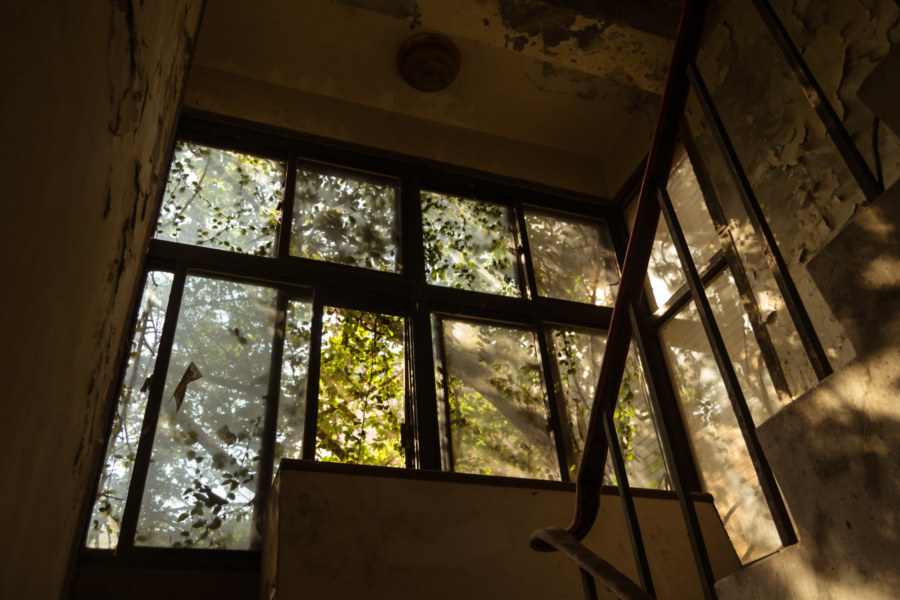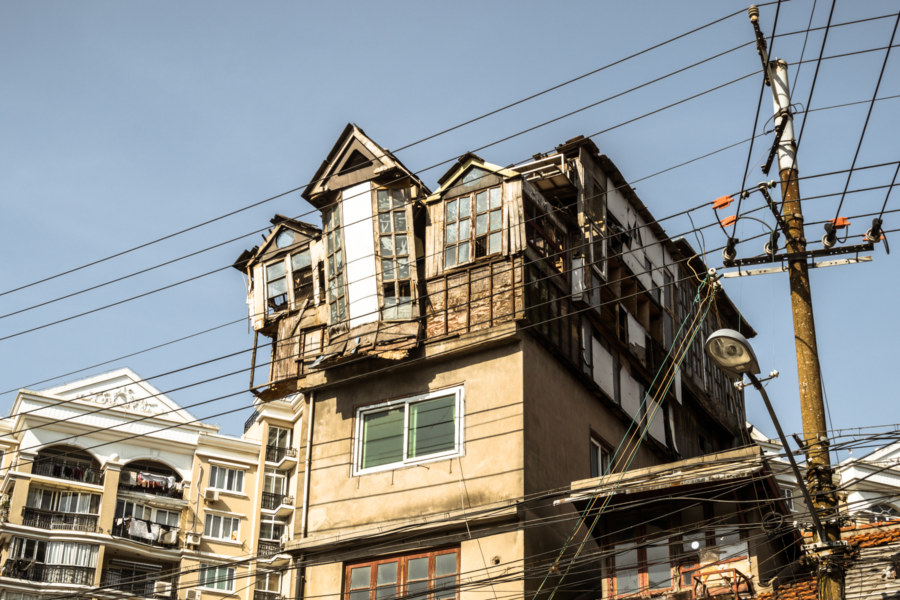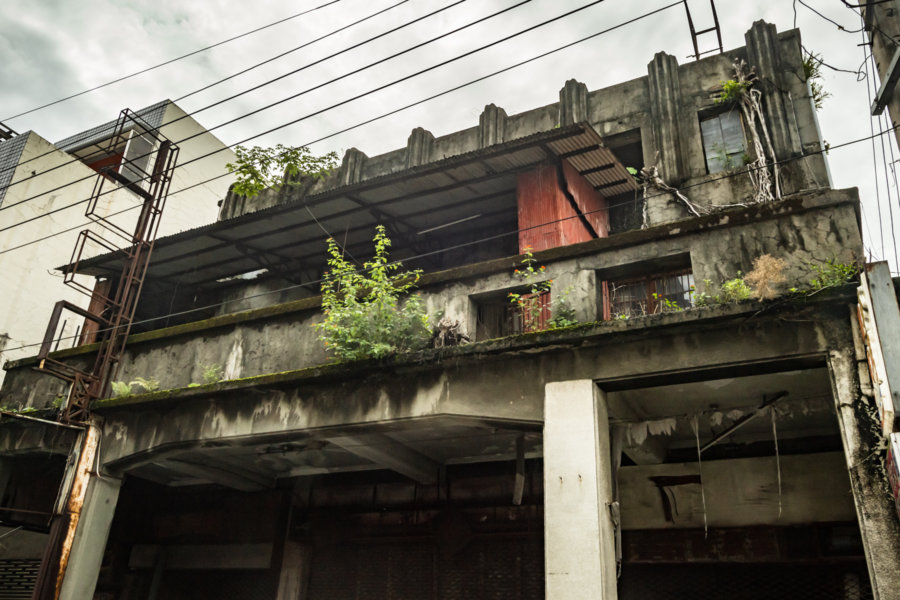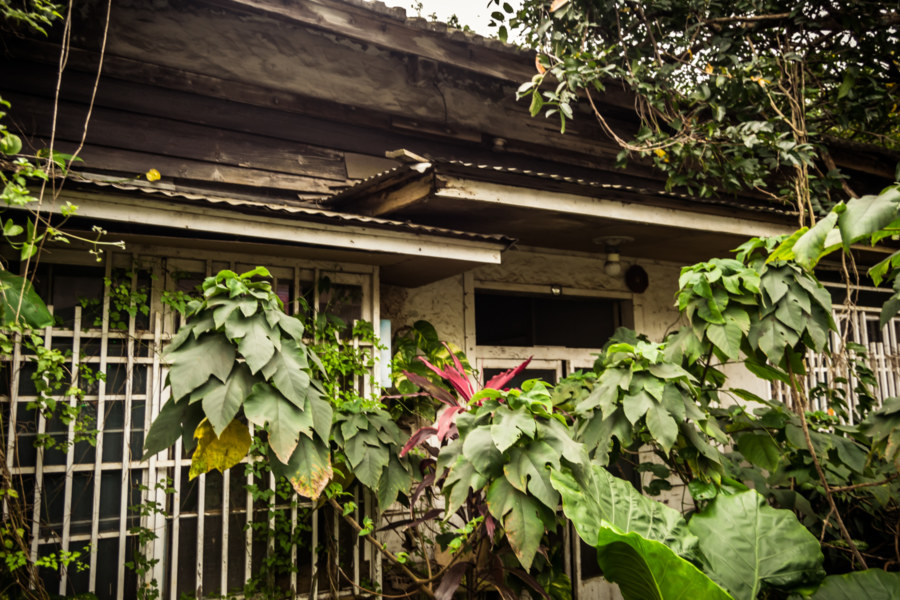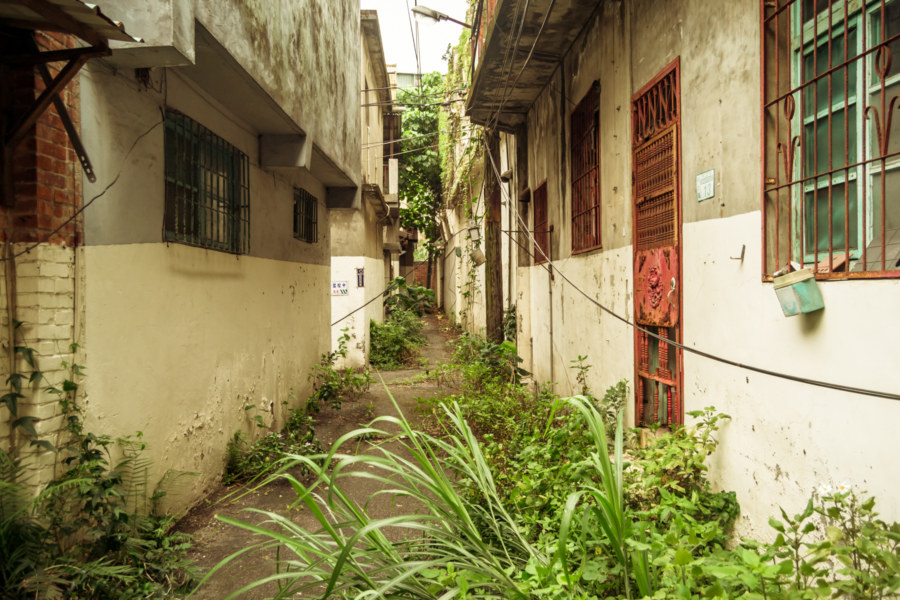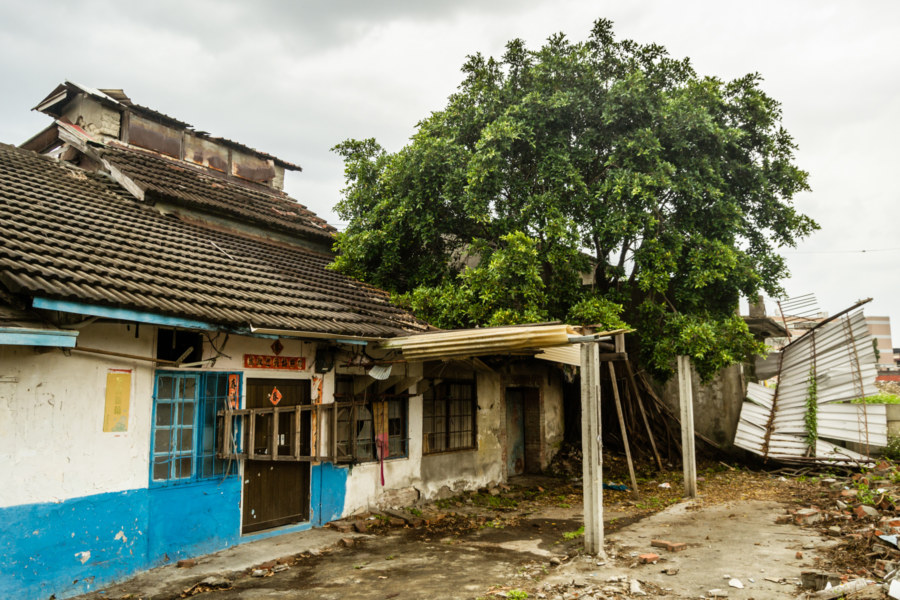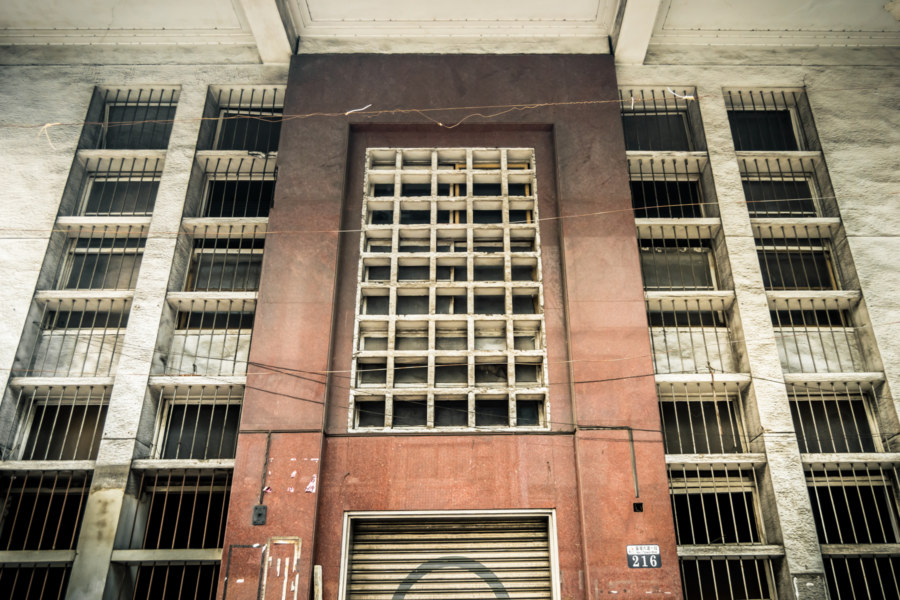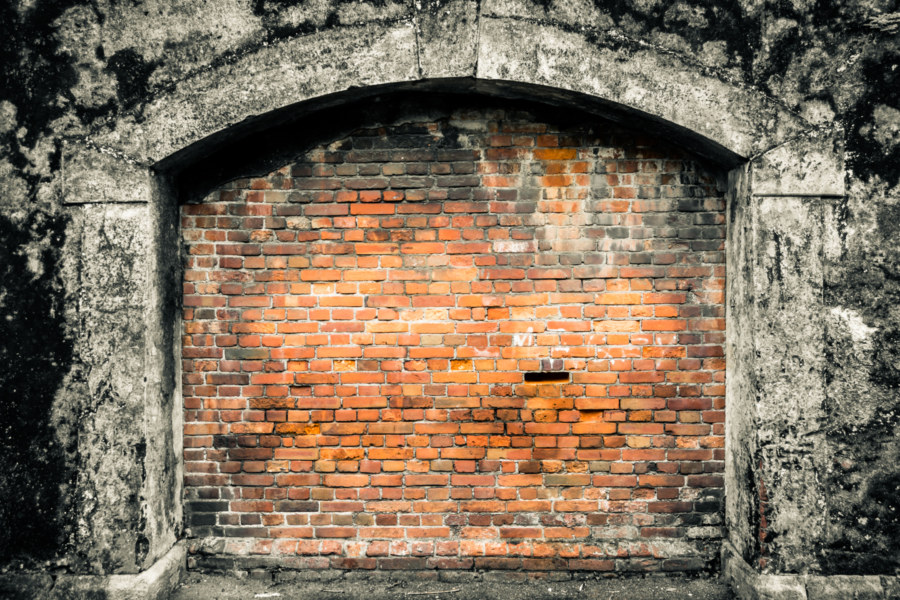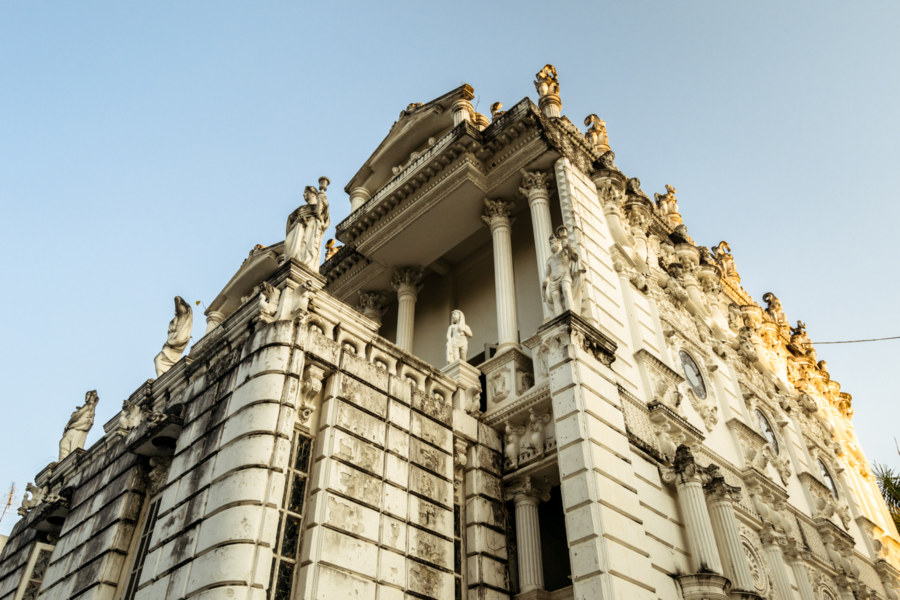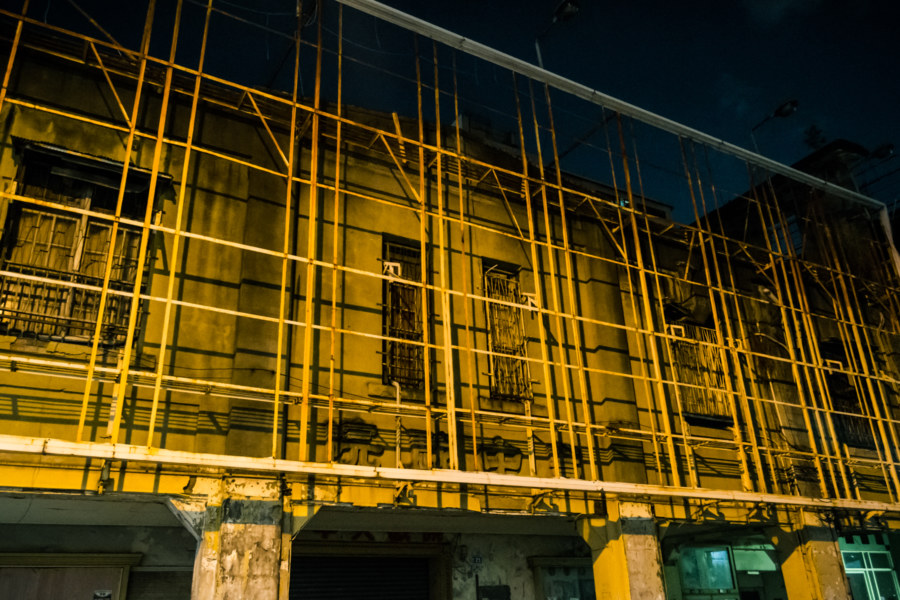Not far from Taipei 101 and the heart of Taipei’s central business district one will find an ulcerous anomaly on the supine body of the sprawling city. It would be impossible to miss this ruin, for a wild riot of plant life traces its angular outlines, and an unusual assortment of graffiti gilds the arcade along Keelung Road. I regularly ride by here on my way to various working cafes further afield and naturally couldn’t resist taking a look inside one day. I have not puzzled out the formal name of this abandonment but strongly suspect it was an official guest house related to the armed forces, particularly as it was located adjacent to the former #44 West Village (四四西村), a military dependents’ settlement.
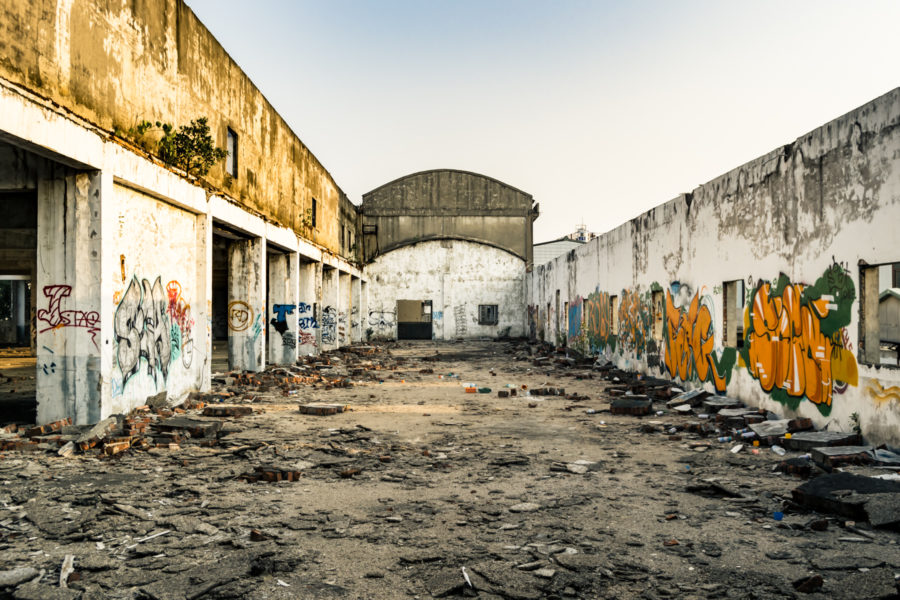
Abandoned buildings and other manmade structures left to the elements. Here I will share the results of various expeditions I have undertaken around the world. See also: urbex, rewilding, and the entire abandoned Taiwan series.
Adjacent Terms
Where Shanghai Disappears
Yesterday I was on my way to check out 1933 Shanghai 上海1933老场坊, a restored Art Deco slaughterhouse in Hongkou, when I stumbled upon a compact neighbourhood in the process of being torn down, part of an ongoing process of urban renewal in Shanghai. Every year more of these old areas are torn down, their residents forcibly evicted, new high-rises and shopping malls going up in their place. My time in Shanghai is too short to allow for any measure of expertise to grow—so all I have to share here are a few photos and some comments from a quick walk around (and through) the block.
Huaguo Theater 華國戲院
Huáguó Theater (華國戲院) is one of hundreds of abandoned theaters scattered around Taiwan. Located in Puli, a town of approximately 80,000 in the heart of Nantou, this particular theater was likely built in the late 1950s. From what I’ve read in an article by Wáng Hénglù (王亨祿), this theater was operated by a couple with the family name Zhōu (周) and specialized in showing Western films on a single screen before its inevitable demise.
Songshan Railway Dormitories 松山台鐵宿舍
Songshan has long been a major hub for the railway industry in Taiwan. It is home to the Taipei Railway Workshop, a sprawling maintenance depot and rail yard presently undergoing renovations into a full-scale museum. The Western Trunk Line (縱貫線) also runs through the district, although it is completely underground now, following the path of Civic Boulevard (市民大道) for much of its length. I went poking around the area sometime in 2016 and stumbled upon a block of dilapidated homes wedged into a small parcel of land at the tail end of the railway workshop. It turns out these are former railway worker dormitories (宿舍) dating back to the Japanese colonial era.
Jiangling New Village 江陵新村
Jiānglíng New Village (江陵新村) was one of more than 800 military dependents’ village in Taiwan before its ultimate destruction in mid-2015. It was formerly located not far from the confluence of Jingmei River (景美溪) and Xindian River (新店溪) just outside Taipei city limits in the northern part of Xindian. Immediately to the south is an active military base of some kind—and the historic Jingmei Prison can be found on the opposite side of the nearest major intersection.
Shuinan Tobacco Barn 水湳菸樓
Shuǐnǎn Tobacco Barn 水湳菸樓 is a historic Japanese colonial era building located in Beitun, Taichung. It is an “Osaka-style” tobacco barn (named after Osaka Castle) much like these more famous examples from Meinong. Nobody seems to know for sure when it was built, though this article claims it is a century old. Without better information I would say the 1930s are a safe bet—that’s when industrial-scale tobacco cultivation was spreading all over central and south Taiwan—but it might be older than that.
Taichung First Credit Union 台中第一信用合作社
Taichung First Credit Union 台中第一信用合作社 is a post-war bank located in Central Taichung. According to this blog it was abandoned in 2001. Last week I went to go take a quick look while surveying the many historic buildings in the area. There were construction workers setting up in front and there were no other points of entry so I did not gain access. Even so, from a quick look inside the place appears to have been cleared out—and they might even be preparing to renovate the building for one reason or another.
The Remains of Taipei Prison 臺北監獄圍牆遺蹟
Not much remains of the old Taipei Prison (台北刑務所) except the walls along the north and south sides of the prison grounds. Originally known as Taihoku Prison (after the Japanese name for Taipei), it was built in 1904 to incarcerate a burgeoning population of political dissidents, revolutionaries, and activists resisting Japanese colonial rule, though the authorities also imprisoned common criminals here as well. It was also the scene of the needless execution of 14 American soldiers a mere 58 days before the end of World War II. The KMT continued to operate the prison into the bleak years of the White Terror (白色恐怖) before razing it to the ground in 1963.
White Lion House, Chiang Mai
Last year I shared my exploration of the House of Success, an extravagant palatial ruin in the northwest corner of Chiang Mai immediately inside the old city walls. In that post I noted that there were two additional buildings of a similar style at the same site, one an active business and the other occupied by squatters. Returning this year for a second visit I was surprised to see that the squatters had left. Wasting no time, I strode into the Jangmuarinnakorn House, more generally known as the White Lion House, to document a previously missing piece of the puzzle.
Fengzhong Theater 豐中戲院
Fēngzhōng Theater 豐中戲院 is one of many abandoned theaters in downtown Taichung. Located a stone’s throw away from Taichung Station, this theater was originally the Taiwan Opera Theater 台灣歌劇戲院, a performance venue founded at the very end of Japanese colonial rule in 1944. According to this source the name was changed to Fengzhong Theater when it was converted for use as a cinema in 1953. It was in continuous operation until 2004 when it was closed and finally abandoned.
